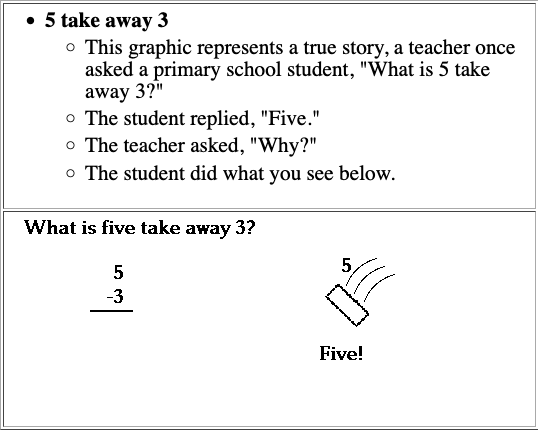Jean Piaget
Modified: 2025-03-14 9:05 PM CDST
Piaget's approach is unusual compared to other theorists. His discovery of cognitive stages was groundbreaking. His emphasis on individualized instruction and knowing the stage a child was in was important.
- Jean Piaget: A Developmental-Cognitive Position: language, reality, causality, time, intelligence all played a role
- The Méthode Clinique
- Like unstructured interviewing
- Hawthorne Effect
- Famous study at Western Electric plant
- Those workers who knew they were being observed altered their behavior simply because of that knowledge
- Is such knowledge by the children being observed similar?
- Theoretical Orientation
- Biological, Evolutionary, and Cognitive orientation
- Assimilation and Accommodation: The Processes of Adaptation
- Assimilation and Accomodation
- Schema
- Equilibration
- Play: Universal phenomenon
- Rules
- Before 3-no understanding/don't follow rules
- 3-5-from higher authority/break and change rules
- 5-12-cannot be changed/rigid adherence to rules
- 12+-understand rules/change rules after discussion
- Rule differences at the various stages illustrate how children think in a manner different from adults
- Imitation
- A kind of accommodation
- Internalization
- Object Permanence
- Another good example of innate ability
- Young infants do not realize that objects no longer visible still exist
- Deferred Imitation
- Brings memory into the picture
- Imitation that occurs at a later time
- Intelligence
- More active process than Gestaltists assumed
- Adaptive
- Schemas as learning
- Cognitive Structures
- A Stage Theory: Stages are qualitatively different, children must pass through stages
- Sensorimotor Development: Birth to 2 Years
- 1. The Object Concept: Object Permanence and age (~9 months)
- 2. Exercising Reflexes: Sucking, Reaching, Grasping, Gazing
- 3. Achievement by Age 2: Communication, Object Concept, Cause and Effect
- Preoperational Thinking: 2 to 7 Years
- 1. Preconceptual Thinking: 2 to 4 Years
2. Intuitive Thinking: 4 to 7 Years
- Overgeneralization
- Transductive Reasoning
- 2. Intuitive Thinking
- Conservations: volume, length, number
- Egocentrism
- Thinking Example
- What is 5 take away 3?
- The child only understood the CONCRETE meaning of "take away"

- Operations: Internalized Activity
- Concrete Operations: 7 to 11 or 12 Years
- 1. The Conservations
- substance, area, volume
- reversibility, identity, compensation
- 2. Can Conservation Be Taught?
- 3. Classification
- 4. Seriatings
- 5. Number
- Formal Operations: After 11 or 12 Years: Adult-like thought
- 1. Combinatorial Analysis: Systematic investigation of ALL possible combinations
- 2. Hypothetical Nature of Thought: Science Fiction, Alternative Worlds
- Piaget’s Theory as a Theory of Learning: Genetic Epistemology
- Gradual acquisition of knowledge
- Stages are hierarchical
- Learning = maturation, active experience, equilibration, and social interaction
- Educational Implications of Piaget’s Theory
- Development comes from:
- Equilibration
- Maturation
- Active Experience and Internalization
- Social Interaction
- Child actively constructs knowledge
- Piaget’s Position: An Appraisal
- Underestimated Young Children
- Formal Operations not Universal
- Too Complex
Back to Cognitive Theories
